-
CATEGORY ::
- All Seeds /
- All Flower Seeds
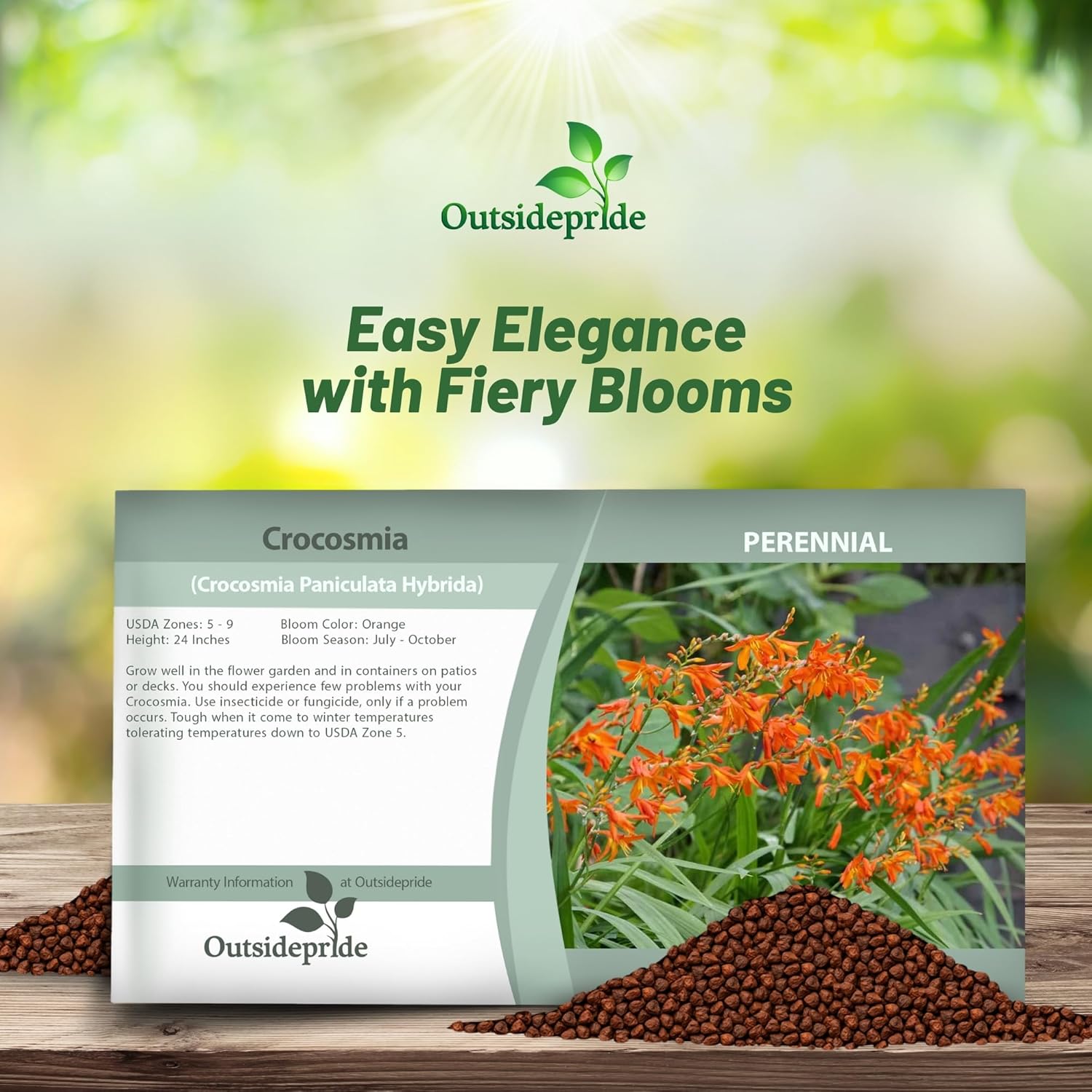


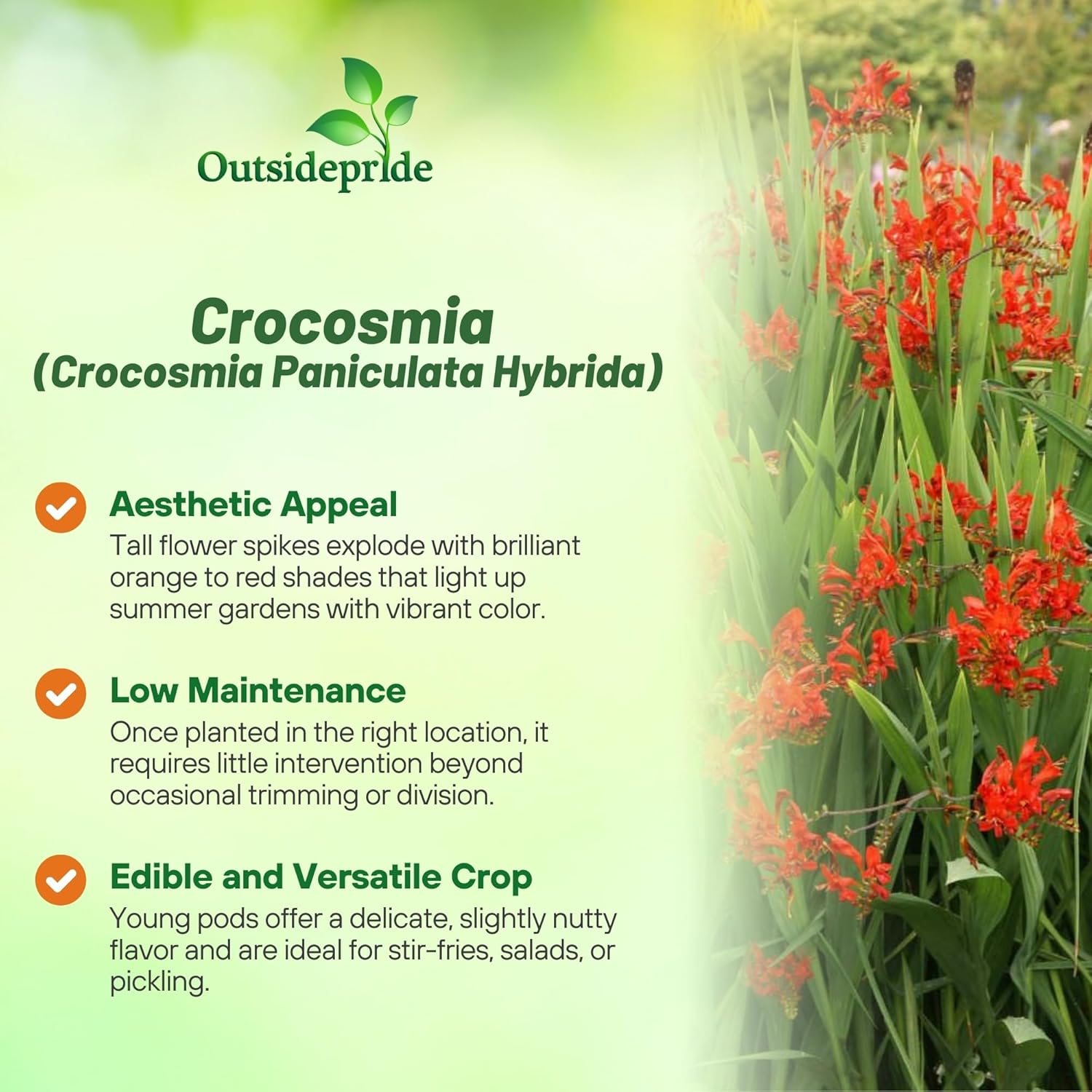
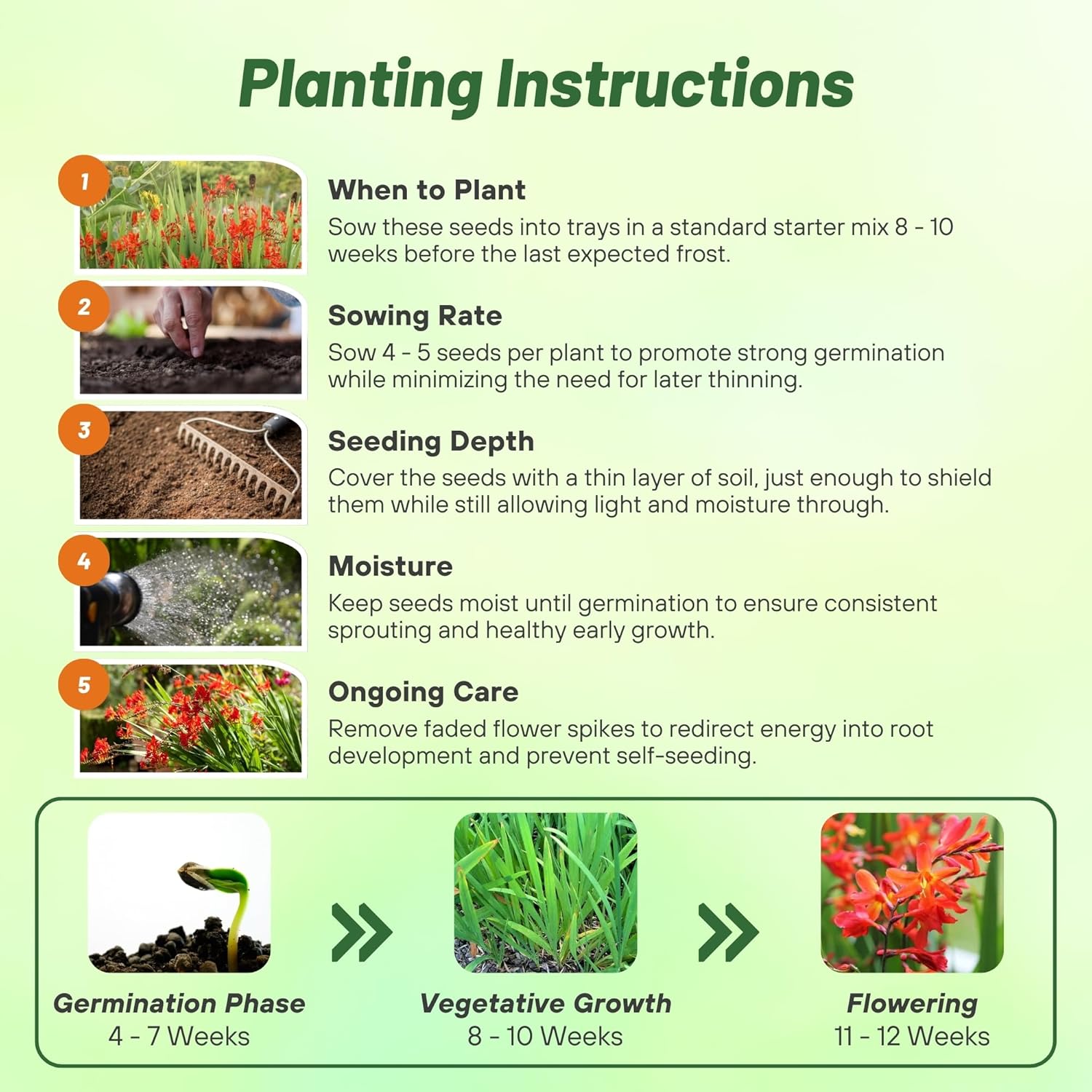

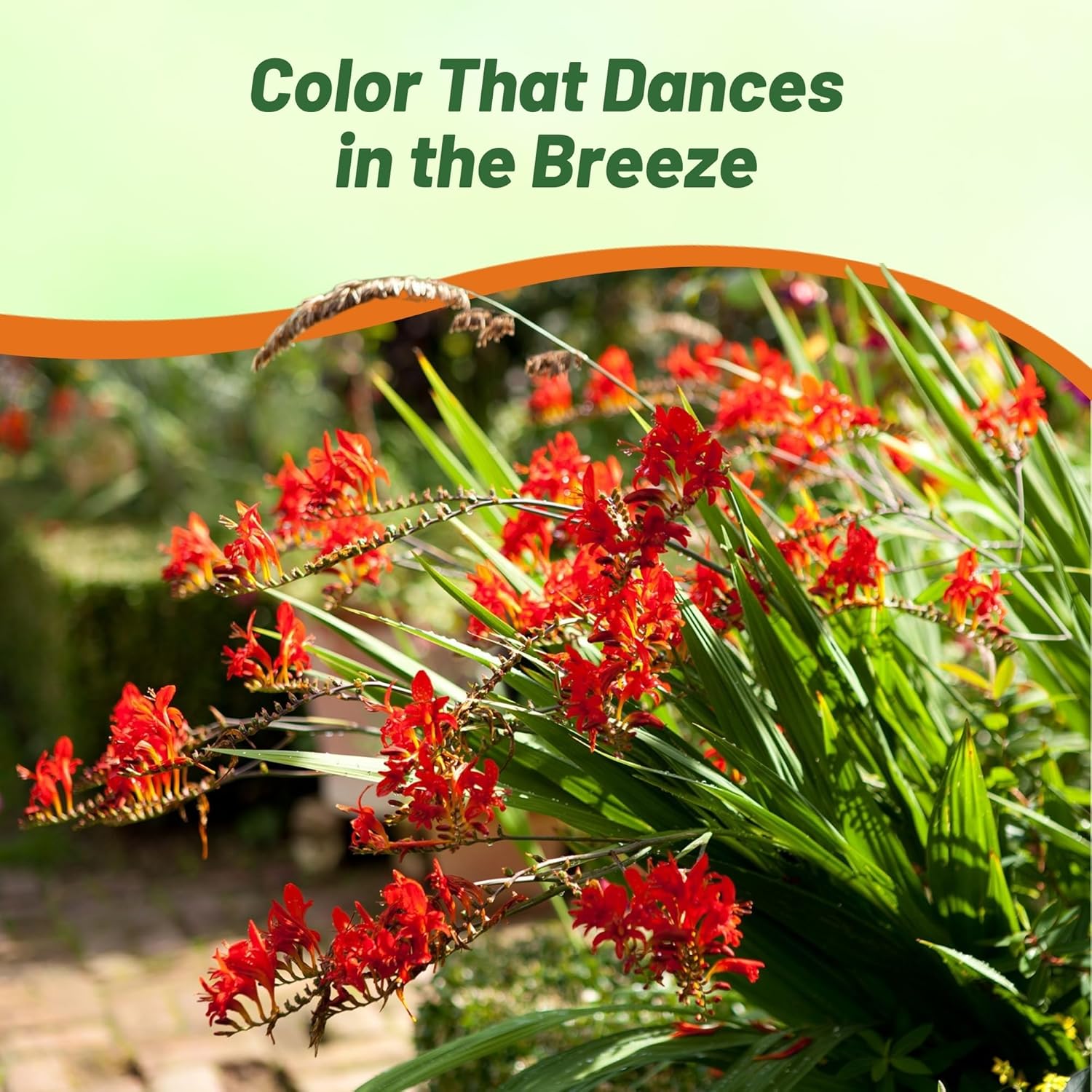


Crocosmia Seeds
About...
Crocosmia (Crocosmia Paniculata Hybrida) - Crocosmia are a popular and attractive flowering plant. Native to South Africa, Crocosmia are members of the Iris family and are easy to grow from flower seeds. Crocosmia plants grow two to four feet tall in a season.MORE FLOWER OPTIONS
Planting Directions
TEMPERATURE
68F
AVERAGE GERM TIME
28 - 56 days
LIGHT REQUIRED
Yes
DEPTH
Seeds must be covered thinly
SOWING RATE
4 - 5 seeds per plant
MOISTURE
Keep seeds moist until germination
PLANT SPACING
16 inches

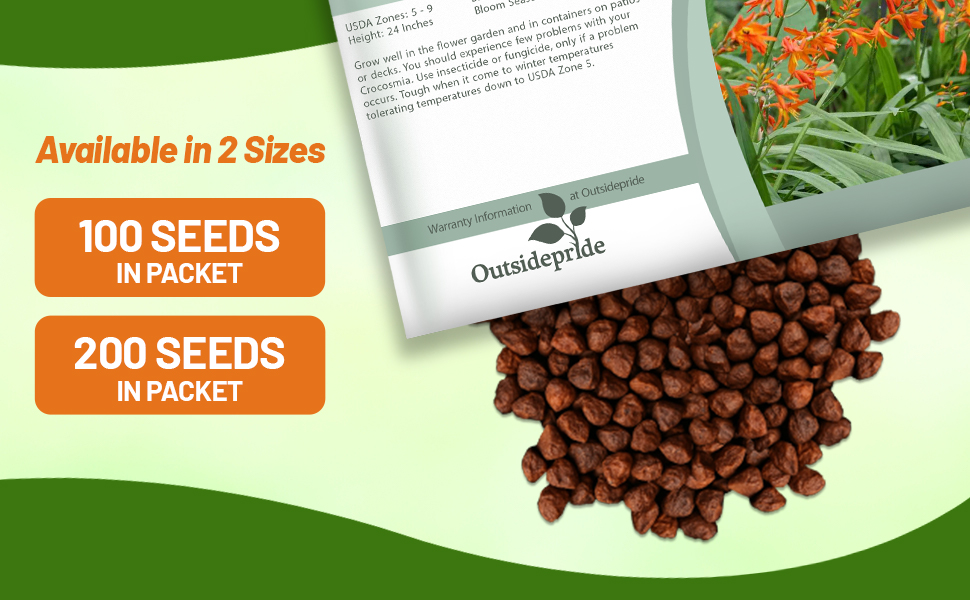
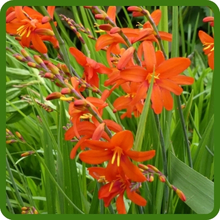
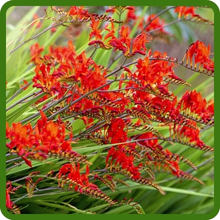
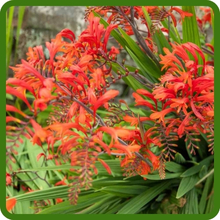
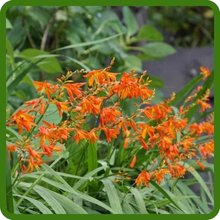
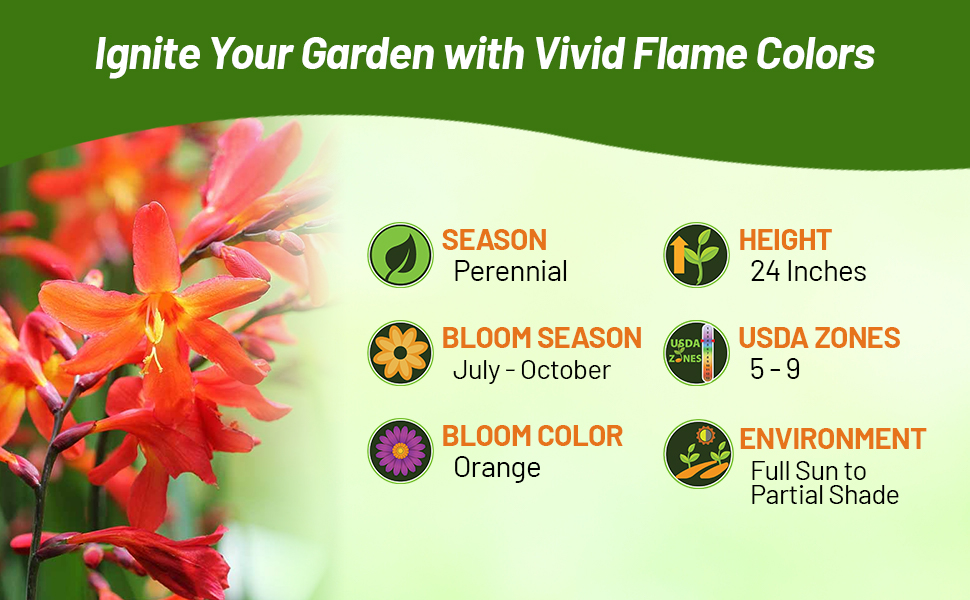
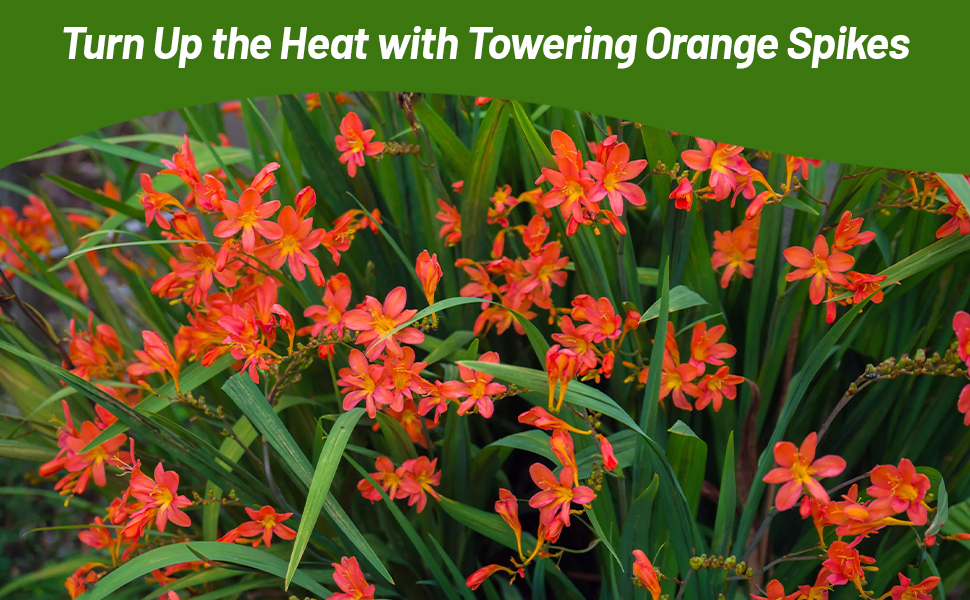
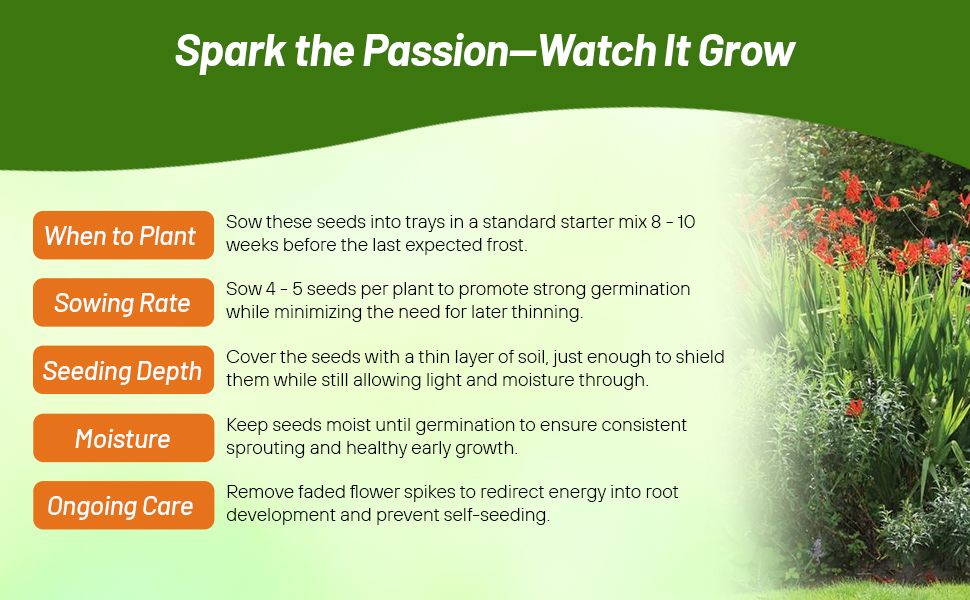
Crocosmia (Crocosmia Paniculata Hybrida) - Crocosmia are a popular and attractive flowering plant. Native to South Africa, Crocosmia are members of the Iris family and are easy to grow from flower seeds. Crocosmia plants grow two feet tall in a season. Tube shaped flower colors include red, yellow, orange-yellow, and orange with splotches. Crocosmia flowers bloom from July through October.
Crocosmia grow well in the flower garden and in containers on patios or decks. You should experience few problems with your Crocosmia. Use insecticide or fungicide, only if a problem occurs. Crocosmia are tough when it come to winter temperatures tolerating temperatures down to USDA Zone 5.
Common Questions
Can crocosmia grow indoors?
While crocosmia is stunning as a cut flower and thrives in large outdoor containers under full sun, it is a tall and vigorously growing plant that tends not to thrive indoors as a houseplant.
How long can crocosmia live?
Depending upon the conditions, these plants can live between 5 and 20 years.
Why don’t I have many blooms?
Remember that crocosmia may not flower in their initial year as the corms are storing energy for future blooms. Factors like sunlight and moisture can affect blooming if the plants have not flowered by their second year.
Why do my leaves look mottled?
If you observe that the leaves of your crocosmia flowers are speckled, light-colored, or have a web-like substance, it may indicate a spider mite infestation. To verify, inspect the underside of a leaf with a magnifying glass to locate the pests and their eggs. These mites feed on the sap of the leaves, causing the described appearance. Combat the mites by using insecticidal soap, neem oil, or resort to pesticides as a final option.
Planting Directions
TEMPERATURE
70 - 75F
AVERAGE GERM TIME
21 - 28 days
LIGHT REQUIRED
Yes
DEPTH
Do not cover the seed but press into the soil
SOWING RATE
4 seeds per plant
MOISTURE
Keep seed moist until germination
PLANT SPACING
10 inches
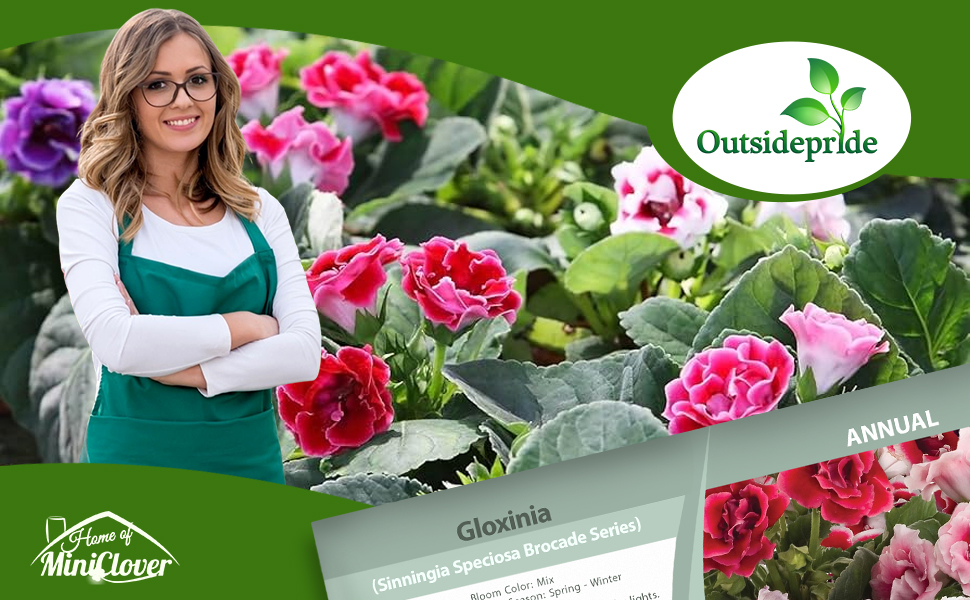
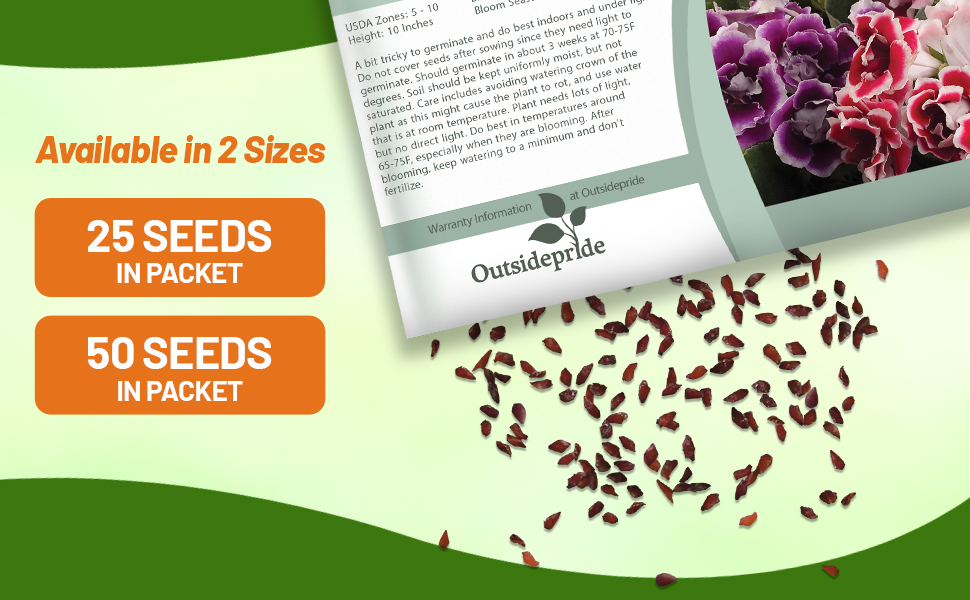
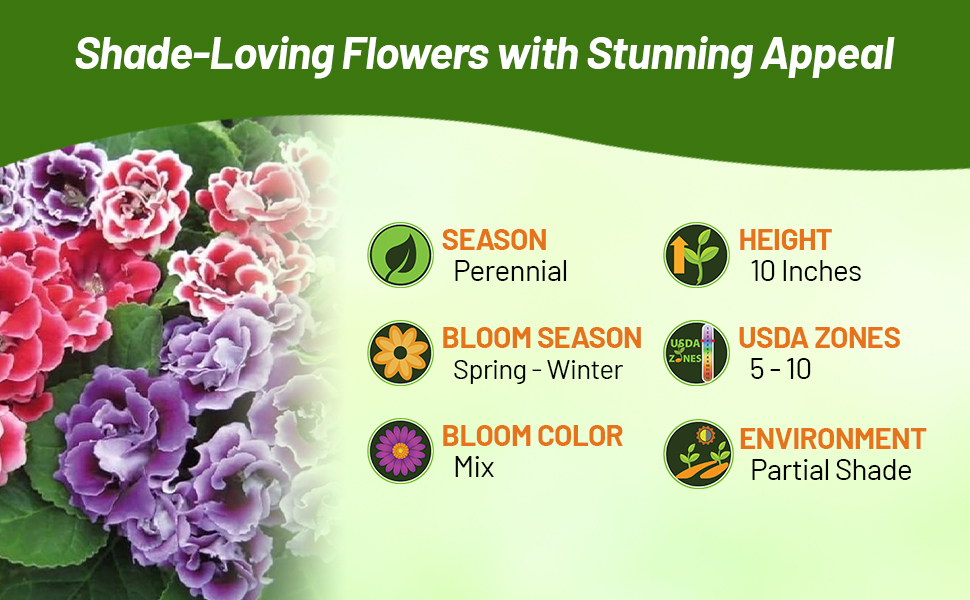
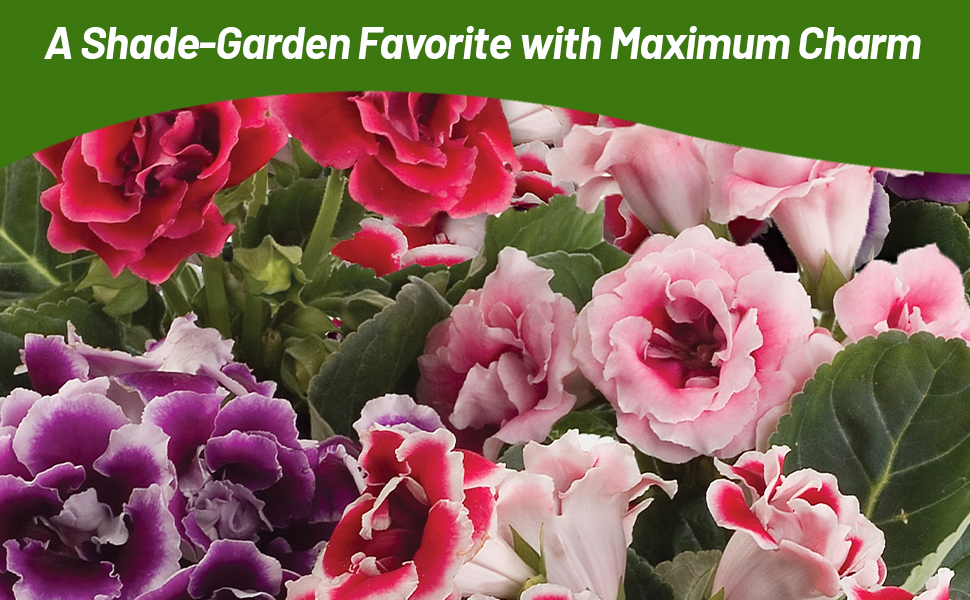
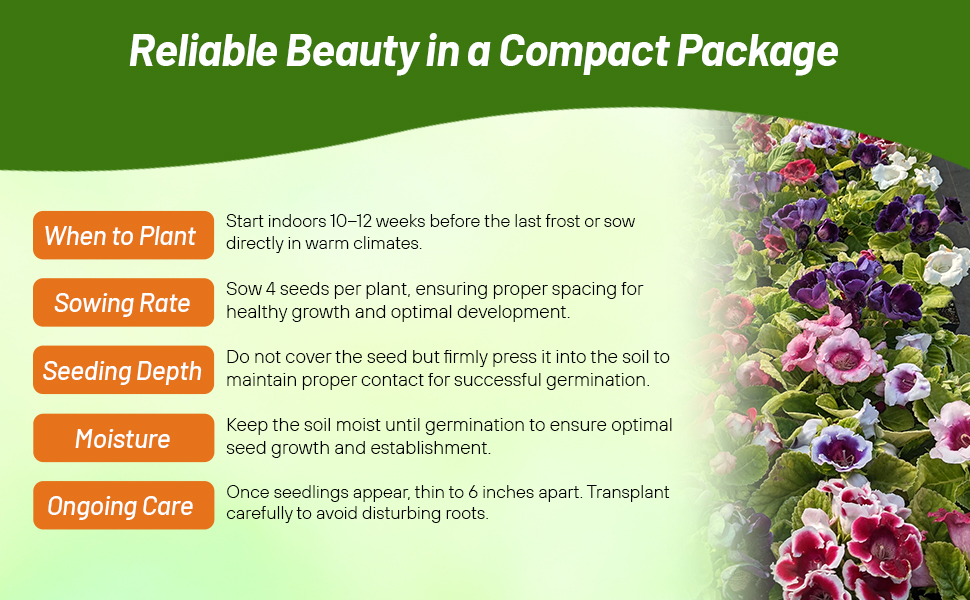
Gloxinia (Sinningia Speciosa Brocade Series) - Sow Gloxinia seeds to produce a beautiful mixture of red, blue, and white blooms. These compact Gloxinia plants blossom four to six months after sowing. They will flower for about 2 months, go dormant for about 2 months, and then begin growing again and start flowering. Gloxinias make a great house plant, giving wonderful, colorful blooms! Sinningia Speciosa is often referred to as Florist's Gloxinia or Brazilian Gloxinia.
Gloxina seeds are a bit tricky to germinate and do best indoors and under lights. Do not cover the flower seeds after sowing since they need light to germinate. Sinningia Speciosa seeds should germinate in about 3 weeks at 70 - 75F degrees. Soil should be kept uniformly moist, but do not keep it saturated. Florist's Gloxinia care includes avoiding watering the crown of the plant as this might cause the plant to rot, and use water that is at room temperature for watering. The Brazilian Gloxinia plant needs lots of light, but no direct light. Gloxinias do best in temperatures around 65 - 75F degrees, especially when they are blooming. After blooming, keep watering to a minimum and don't fertilize.
Common Questions
Do I need to prune my gloxinia?
To encourage a longer bloom season, you will need to deadhead your spent flowers. After the bloom period is over and your plant enters dormancy, prune back any dead or dying foliage.
My leaves are dropping, what do I do?
This can occur from sudden temperature changes such as drafts.
My leaves look scorched, why?
Direct sunlight can burn the leaves of your gloxinia, causing them to scorch and crisp.
My flowers are losing their vibrancy, what do I do?
This is typically caused by inadequate light move your plant to an area with more light but not direct sunlight.
Planting Directions
TEMPERATURE
55 - 65F
AVERAGE GERM TIME
14 - 21 days
LIGHT REQUIRED
Yes
DEPTH
Surface sow seed and light cover no more than 1/8 inch deep
SOWING RATE
3 - 5 seeds per cell or approximately 5000 seeds covers 100 square feet
MOISTURE
Keep seeds moist until germination
PLANT SPACING
8 inches
Leptosiphon Mix (Leptosiphon Hybrida French Hybrids Mix) - Start Leptosiphon seeds to start these dainty little flowers. Leptosiphon French Hybrids has the synonymous botanical name Linanthus androsaceus. This low-growing annual has fern-like foliage and hundreds of sweet little half inch star-shaped flowers that shine out from the foliage. The colors are mixed and bright in shades of rose, yellow, orange and cream. Leptosiphon uses include edging the front of the flower bed, containers, edging a pathway, or as a ground cover. Commonly known as False Baby Stars, this annual is lovely if it is allowed to spill over the edges of rocks or containers. It makes a carpet of color and is stunning!
Grow Leptosiphon seeds directly outside in a prepared seedbed after frost danger has passed. Press the flower seed into the soil and lightly cover. False Baby Stars flowers perform best in full sun, and they prefer rich, well-draining soil.
































